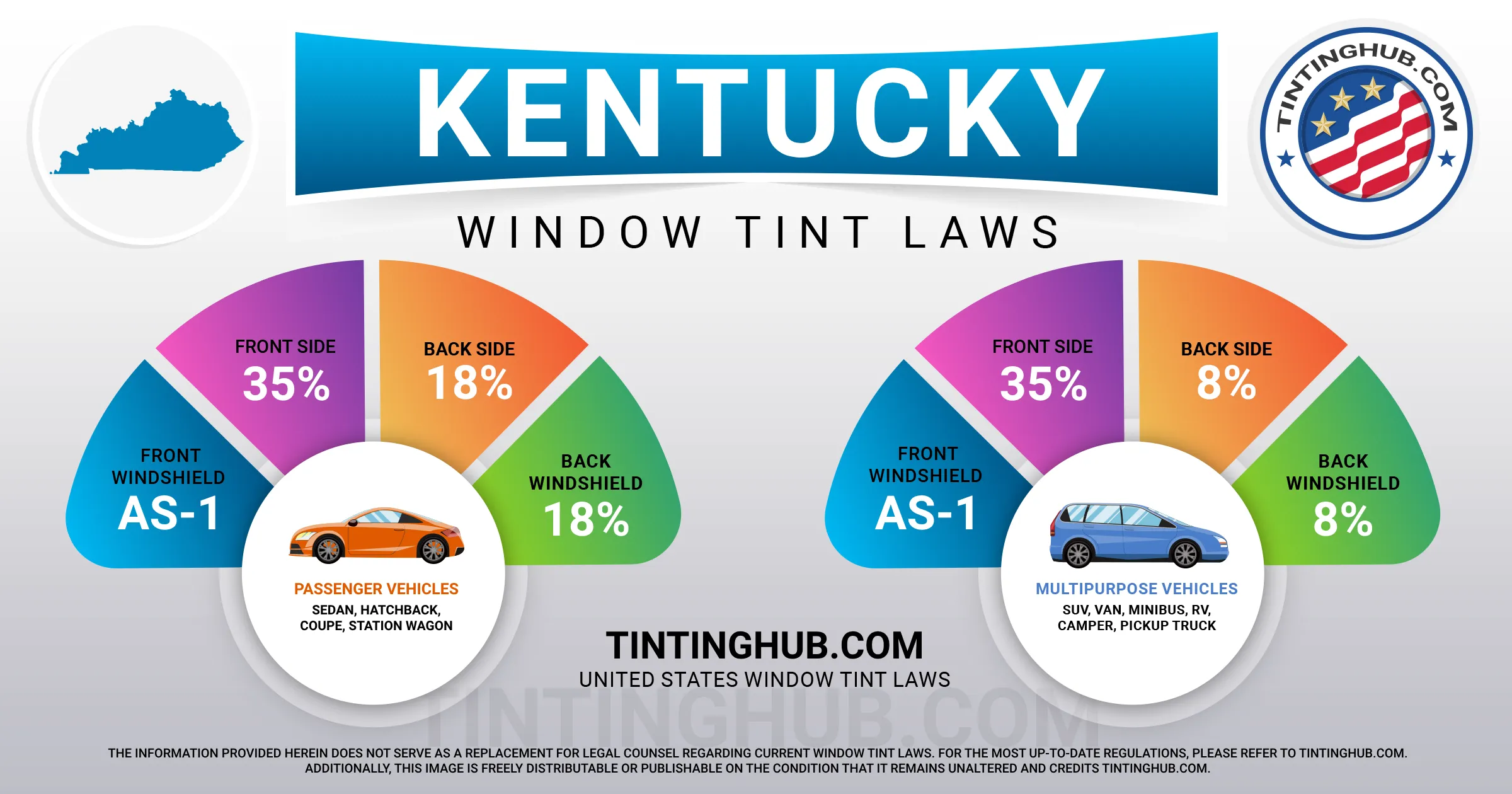Kentucky Window Tint Laws (Last Update 2024)

Are you a Kentucky resident looking to enhance your vehicle’s style and comfort with window tinting? Understanding the car window tinting laws in Kentucky is crucial. In 1994, Kentucky enacted specific regulations to govern window tinting on vehicles. In this comprehensive guide, we will provide you with all the essential information you need to ensure your window tint complies with the law, including tint darkness, reflection, and other important rules and regulations.

Window Tint Darkness in Kentucky
Sedans Tint Darkness:
- Windshield: Non-reflective tint is allowed above the manufacturer’s AS-1 line.
- Front Side Windows: Must allow more than 35% of light in.
- Back Side Windows: Must allow more than 18% of light in.
- Rear Window: Must allow more than 18% of light in.
SUVs and Vans Tint Darkness:
- Windshield: Non-reflective tint is allowed above the manufacturer’s AS-1 line.
- Front Side Windows: Must allow more than 35% of light in.
- Back Side Windows: Must allow more than 8% of light in.
- Rear Window: Must allow more than 8% of light in.
Window Tint Reflection in Kentucky
Window tint not only provides privacy but can also reflect incoming light, reducing glare and heat. It’s important to know the rules regarding tint reflection in Kentucky.
Sedans Tint Reflection:
- Front Side Windows: Must not be more than 25% reflective.
- Back Side Windows: Must not be more than 35% reflective.
SUVs and Vans Tint Reflection:
- Front Side Windows: Must not be more than 25% reflective.
- Back Side Windows: Must not be more than 35% reflective.
Other Kentucky Window Tint Rules and Regulations
In addition to darkness and reflection limits, Kentucky has other essential laws and regulations related to window tinting. These include:
- Side Mirrors: If the back windshield is tinted, dual side mirrors are required.
- Restricted Colors: Kentucky does not prohibit specific tint colors.
- Tint Variance: A 3% variance is allowed.
- Certificates: Manufacturers of window tint film need to certify the film they sell in the state. Always consult with your dealer to ensure they are using certified film.
- Stickers: A sticker to identify legal tinting is required on the inside of the driver’s side doorjamb.
- Medical Exceptions: Kentucky law does not allow medical exemptions for special tint.
- Penalties: Violating tinting laws can result in a Class B misdemeanor.
Local Variations
Keep in mind that while these are the statewide regulations, Kentucky tinting laws may be interpreted differently in your county or place of residence. Therefore, it’s always a good practice to double-check this information with your local Department of Motor Vehicles or law enforcement authorities.
Our information about window tint laws in Kentucky was last updated in 2023.
In case any of our provided information is not up to date or correct, please do not hesitate to contact us so we can make the necessary adjustments. We are committed to being a trusted industry leader in providing accurate and up-to-date window tint laws information for Kentucky residents.
Source : Drive KY